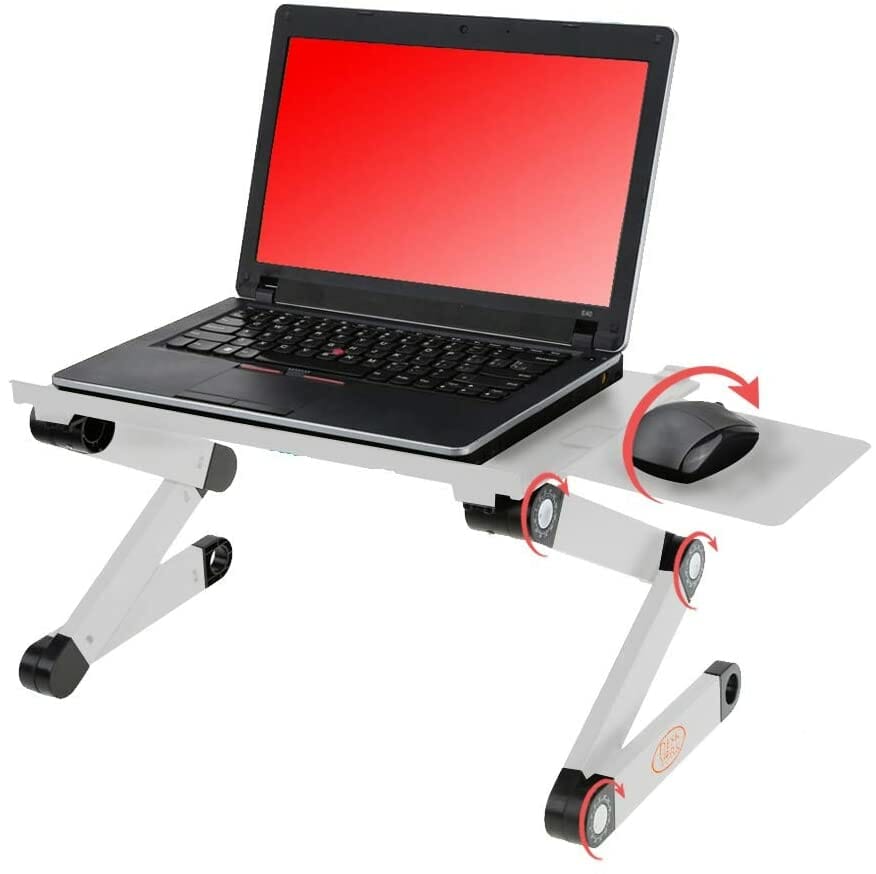Computer Tables
Purpose
Tables with various features that make working on a computer more accessible.
Description
The following are a few ways that people in the FOP community have found to make working on a laptop or computer more accessible despite limited reach and/or various postures that may range from seated to standing.
Adjustable laptop stands are the most economical way to modify the height and viewing angle of a laptop. These stands have adjustable legs that can raise, lower, and change the angle that you view the screen. Often the platform where the laptop sits can also change in angles while still holding the laptop in place with a rubber-grip surface. Additional features that are sometimes included in these laptop stands are a small side table for a mouse, a storage drawer, a bookstand for holding books or papers upright, or a cup holder. Another benefit for these less-expensive laptop stands is that they are portable and allow you to use them on a desk or table in any room of your home, or even in bed while you are lying down. When shopping for one of these stands, consider whether you will use it only for a laptop or if you will also want to use it for writing or crafting – if this is the case you may want a laptop stand with a larger table top surface. These adjustable laptop stands also help adapt a work surface for kids in school making papers easier to read or writing easier when the surface is higher and angled.
If you use a desktop computer or use multiple monitors, desks that raise and lower are another way to make working at a computer more accessible. Adjustable height desks allow you to work while seated in a chair, in seated wheelchairs of various heights, in a standing wheelchair or eye-level position of a wheelchair, or in a full standing position. There are height-adjustable tables that manually raise and lower using a crank, but individuals with FOP will likely need an electric adjustable desk for easier use. Electric desks use either a control panel with buttons on the frame of the desk, a remote control, or are controlled by a smartphone app (those that use remotes and smartphone apps are more expensive). Other features you may look for when choosing a desk is optional drawers, multi-level desktop surfaces, cup holders, outlets, USB ports or charging stations, and preset memory options that allow you to quickly adjust the table to your favorite predetermined heights. * The UPLIFT desk pictured in this post is a more expensive but highly-rated brand, and it is included here to show that you can also find curved (120-degree) desk surfaces that may make it more accessible when sitting in a wheelchair and arm mobility and reach is limited.
Tips
If you are looking for desk options for younger children in a school setting, check out the additional posts in the “School and Childhood” category of this Online Guidebook.
Where to purchase
Luc used a portion of his L.I.F.E. award to purchase this electronic adjustable height desk so that he could work in either a seated or standing position. Thanks for sharing Luc!



